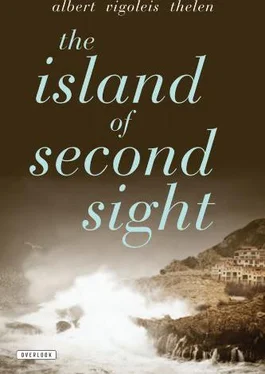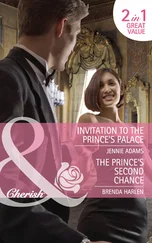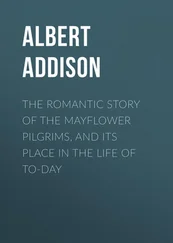Don Alonso María Jesús de Villalpando, Marqués de Sietefillas y Conde de Peñalver y Tordesillas — this was part of the dynastically expansive and ramified title of our anarchizing hosteller and friend of the people. Here I shall call him simply Don Alonso, for the sake of brevity, and at the same time in keeping with his own sworn abhorrence of highfalutin’ traditions. Don Alonso married into the palace on the Calle de San Felio, and the price he paid for the holy sacrament was Doña Inés, the only daughter and last surviving offspring of a very old family with a probably even longer name. The roots of her family tree were located somewhere deep in ancient Castilian terrain, and the branch that she extended into the world with a certain pious resignation was just as desiccated and unyielding as the soil from which it sprang. One of her chain-mailed forebears had arrived on the island in 1229 with James I of Aragon, the Conqueror, and here the family flourished. But now it was in a state of acute degeneration. Doña Inés remained childless, in sharp contrast to the seven daughters that Don Alonso sported on his flattened-out coat of arms: Marqués de Sietefillas. Extramaritally, however, he exceeded this heraldic challenge. He sired several progeny, by lovers he obtained in order to sweeten a life spent at the side of the increasingly sour, tiny, almost dwarflike, and exceedingly ugly Doña Inés, whose physiognomy Velázquez was able to capture long before her dynasty’s final aberration first saw the light of the island near the turn of the century.
Yet as mentioned above, such distasteful matters were never spoken of in the Count’s house. Everyone knew that they had happened, and that would have to suffice. If it hadn’t been for this marital prize, the Casa del Conde, which the state had yet to declare a historical site, Don Alonso would have left his little housewife in the lurch — where, incidentally, she now finds herself. Who wouldn’t do the same to snatch a dowry like this one? I would, at the drop of a hat! In which case I would make just the kind of arrangement with Beatrice as the Count appears to have fashioned with his multiple mistresses. For I have not only aristocratic inclinations, but capitalistic ones as well: Vigoleis as a palace lord! I can just see him reclining in his Hall of Ancestors. Beatrice would finally get her own pipe organ.
Like most Mallorquine villas, in architectural style this free-spirited Count’s palacio showed a pronounced influence of the Italian Renaissance. And like many others, the edifice was falling apart. In the interior court an arch had split apart, and was kept from collapsing by means of timbers and iron clamps. The open staircase was likewise out of plumb, ditto the gallery that led to the gate of the piso principal , the main floor. Everything had to be propped up, until the day when our enterprising anarchist could put together enough of his homemade bombs and infernal machines to blow up the whole island, which is to say the whole world. Over the centuries, the Spaniards have developed a genuine and fascinating mastery in the art and culture of architectural decay, a skill exceeded perhaps only by their Iberian brothers in Portugal. They are no good at restoration, because they are too impulsive, too little devoted to petty matters, and still too rich in the midst of their poverty. Historical conservation requires a sense of having nothing to put in the place of what is in decline. The Spanish are not conscious of their poverty, and therein lies their greatness.
In the courtyard there stood some crippled banana shrubs, recognizable for what they were supposed to represent only by the shape of their leaves. A coat of white dust enveloped these subtropical plants, but every so often they took on a tropical aspect when a wind arrived across the Mediterranean from the Sahara and covered their whiteness with a reddish coat. Above these bushes stood a stately palm tree, just as genuine as the banana plants but, unlike the latter, free of dust. A little monkey, Don Alonso’s darling, leaped around the fronds and kept them from getting dusty by busily shaking them. Don Alonso, who was skeptical about mankind and even in despair at times when the production rate of fireworks was at an ebb, sought and found in “Beppo” what Madame Perronet had sought and found in her tomcat Melchisédech and Bismarck in his Imperial hounds. Our Spanish landlord, on his part, had to reach back to a former evolutionary stage of humanity to obtain the consolation he was seeking.
Broad-leafed plants, with above-ground roots of a kind that I never saw elsewhere on the island, were growing here in big-bellied clay vats that had once served as containers for water. These roots were remarkable for the little red blossoms that came forth out of their woody fibers — parasites, as Herr von Martersteig claimed. The courtyard floor was set with sizeable flagstones. In the rainy season, when pools of water collected in between them, to keep our feet dry we had to jump our way across the court to reach the first step of the open staircase. In the background of the patio, where doors led to the stables and storage rooms, was a red-marble dipping well, whose rusted iron framework revealed that it was just as dried up as the house’s exchequer.
The entrada or entrance hallway was roomy. If upon entrance you looked up at a ceiling richly inlaid with polychrome wood, you were given the impression of grandiosity, of expansiveness, of a style of living that is not constrained to camouflage its four enclosing walls with slaked lime. But we seldom enter a stranger’s house with our eyes elevated to heaven; in certain instances we tend to do just the opposite. Stepping into the Count’s solarium, our glance went directly to what was no longer aristocratic at all about Doña Inés and her purchased spouse, Alonso. It was not even aristocratic in the sense of those impoverished noble types who decorate their cramped city apartments with relics of their exalted family heritage. This space was the realm of little people who have renounced a glorious past, but who continue to honor what they have inherited from the bride’s father, besides the palace itself. It contained paintings — paintings that were just as unmarketable as I would term them impossible, if we weren’t forced to admit that the impossible simply doesn’t exist. Don Alonso’s father-in-law had daubed these monstrosities onto canvas during a long lifetime as a Sunday and workday hobbyist. Still-life studies with columns, lizards stuck on them, a goat reclining in shadow; pieces of fruit; sunsets that one could interpret as sunrises with no loss of effect; blind alleys showing everything in merciful darkness; portraits of women who, at least as they appeared on canvas, could never count on winning a husband; portraits of men whom one should probably avoid after dark; pictures of children, of whom Beatrice said that if they were hers, she would drown them in a bucket. I supplemented these criminal aesthetics of hers by remarking that there were people who wouldn’t shrink from trashing the pictures, too, if they were forced to live in their company — which is exactly what we were about to do. A self-portrait of the artist stood on an easel. That seemed the only way to permit the magic of illumination to play upon his forceful, very Castilian nose. By rough estimate, a good fifty square yards of painted canvas were hanging in this hall — and that, by the very same approximate estimate, was the total vertical surface of the hall itself including the doors, which also had art works on them.
“Ghastly!” Beatrice said when it dawned on her that the paintings were worse than the children she reacted to so vehemently and who, after all, must have given some modicum of pleasure to their parents. “Ghastly! All of them should be burned!”
Читать дальше












